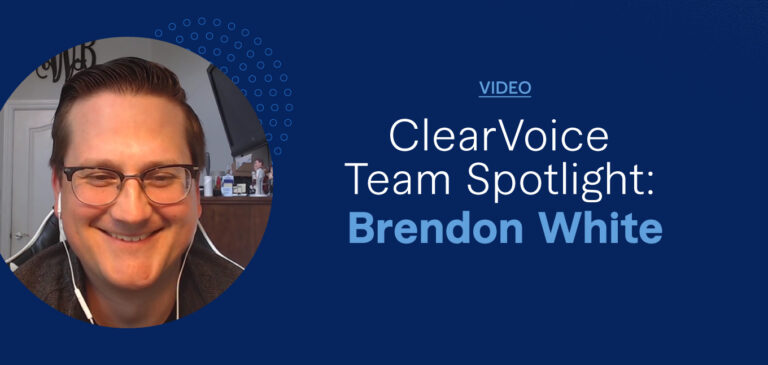Try this if you’re bored one day. Google “lead generation.” What will pop up is more than a billion hits consisting of paid advertising (“Leads for Sale!” reads one), examples, and how to make it work for you.
But when it comes to lead generation — or lead gen — definitions can be all over the place. For instance, one article might define successful lead generation as developing audience interest in a product or service through nurturing.
Another blog points out that lead generation involves reaching potential customers when they are just starting out on their product sales journey.
And still, another indicates that the process focuses on collecting information to build a list of potential clients.
These definitions are not too far off. But to understand the concept of successful lead generation, it’s important to define your brand’s definition of a lead.
How does your brand define leads?
Quite simply, a lead is an individual who expresses an interest in your product or service. And yes, lead generation can be the act of qualifying potential customers, and adding them to a sales pipeline.
But this is where it gets a little tricky. Some companies believe that website visitors are leads. The result is a retargeted ad that “follows” the individual around as they make their rounds on social media and other internet sites. The hope here is that the individual will click on the ad when they see it.
In comparison, a qualified lead is defined as someone who willingly gives you their contact information, such as an email address. A successful lead generation process encourages potential customers to share their contact information with you. That willingness to share means this individual is interested in your product or service. Also, with that information, you can nurture said prospect along the marketing funnel, eventually convincing him or her to act.
A brief lead generation history
If you’re bored again, google “history of lead generation.” The results here are meager, numbering in the single digits. And they differ in historical perspectives.
But these articles have some similarities:
- Back in the day (read: the early to mid-20th century), lead generation resulted from direct sales. Specifically, door-to-door prospecting.
- Fast-forwarding to the mid-to-late 20th century, the Fuller Brush Man lead gen method was replaced by call center sales. While those calls were as annoying as today’s robocalls, they did generate leads.
- At the same time, television got into the act with late-night infomercials. As insomniacs ordered their Snuggies and ShamWows, marketers received caller information, using that data to continue targeting buyers with more offers.
The above involved “push” lead generation, in that products, services, and phone calls were “pushed” onto a captive (and sometimes annoyed) audience. But the advent of the internet, social media, and email changed this, making the relationship between customer and company a two-way street. These days, it’s the prospect, not the seller, who has the buying power.
5 tips for successful lead generation
With the above in mind, one best practice is to not annoy potential customers by being overly insistent. Here are other thoughts on successful lead generation:
1. Identify your target audience
This is a basic “best practice” of successful lead generation but can sometimes be overlooked. By “identifying,” we mean understanding the audience’s pain points and what will motivate them to act (by purchasing from you). This identification is a process that is best achieved with the help of customer relationship management software and a solidly crafted marketing funnel.
2. Define your lead
It was mentioned above that the casual visitor to your website is likely not a lead. But a qualified lead could be someone who:
- Fills out a form
- Requests a callback
- Downloads an ebook or other information
In other words, the lead is willing to trade their contact information for something you provide. This leads us to the next best practice…
3. Make an offer they can’t refuse
Be sure you provide something of value in exchange for contact information. For instance, law firms are generating higher-quality leads through use of interactive quizzes, rather than contact forms. These can be more enjoyable for a visitor to fill out, and it provides attorneys with information.
Other things to trade for prospect information include informative ebooks or brochures, no-obligation consultations, or email subscriptions to newsletters or digests.
4. Create outstanding content
A crucial component of successful lead generation is compelling, readable, interesting content that is of interest to your audience (which is why identifying your target audience is so important). The content does a couple of things. It demonstrates you have answers to your prospects’ problems. And it helps increase your prospects’ comfort level with what you’re selling.
5. Go beyond the sale
Once you’ve gotten your prospect to act, continue massaging that lead by encouraging feedback and offering additional content. It’s much easier to sell to an established customer than to go back to the beginning. And, if that customer is happy with you, they’ll tell their friends, relatives, and others. Word-of-mouth is a number-one marketing tool.
Successful lead generation = respect
A key to successful lead generation is not necessarily about that final sale, though that’s one goal. Rather, it’s about getting a prospect to trust you enough to hand over their information. In doing so, the potential customer is signaling a willingness to build a relationship with you and to learn more about how what you’re selling can be of benefit to that individual.
Because of this, lead generation is less about aggressive marketing and more about respect.
Need help creating content for a lead generation campaign? Talk to a content specialist today at ClearVoice to start building a relationship with your customers that leads to more sales and long-term loyalty.






